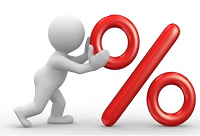 BOSTON—Earth Day may be just around the corner, but consumers are buying with an eye toward “green” all year long. A record-high 71 percent of Americans consider the environment when they shop, up from 66 percent in 2008. Additionally, nearly half (45 percent) of consumers actively seek out environmental information about the products they buy, according to the five-year benchmark of the 2013 Cone Communications Green Gap Trend Tracker.
BOSTON—Earth Day may be just around the corner, but consumers are buying with an eye toward “green” all year long. A record-high 71 percent of Americans consider the environment when they shop, up from 66 percent in 2008. Additionally, nearly half (45 percent) of consumers actively seek out environmental information about the products they buy, according to the five-year benchmark of the 2013 Cone Communications Green Gap Trend Tracker.
Even as “green” becomes increasingly top of mind, Americans still struggle with their role in the life cycle of products with an environmental benefit. Ninety percent said they believe it’s their responsibility to properly use and dispose of these products, but action isn’t aligning with intent. Only 30 percent say they often use products in a way that achieves the intended environmental benefit. Forty-two percent say they dispose of products in a way that fulfills the intended environmental benefit.
Despite the lack of consistent follow-through, consumers are showing an inclination to learn more. Americans report they regularly read and follow instructions on how to properly use (71 percent) or dispose (66 percent) of a product. Forty-one percent said they perform additional research to determine how best to utilize and discard a product for maximum benefit.
Consumers Want Education on Product Disposal
Nearly all respondents (85 percent) want companies to educate them on how to properly use and dispose of products. But they identify significant barriers to doing so, as well. One-third of consumers (33 percent) cited not having the adequate resources, such as disposal bins and community access, as the primary reason for not disposing or using products as intended, while 20 percent stated they simply do not know how to do so.
Consumer understanding of environmental messages also presents an obstacle. Although more than 60 percent of respondents say they understand the environmental terms companies use in their advertising, the majority continue to erroneously believe common expressions such as “green” or “environmentally friendly” mean a product has a positive (40 percent) or neutral (22 percent) impact on the environment. Fewer were able to correctly identify these terms as meaning the product has a lighter impact than other similar products (22 percent) or less than it used to (2 percent). Despite the attention given to product development and environmental marketing, consumer misunderstanding of green claims has remained flat at around 60 percent since 2008.
“The new green gap is about consumers only taking the idea of responsibility so far, despite feeling responsible for proper use and disposal,” says Liz Gorman, Cone Communications’ senior vice president of Sustainable Business Practices. “They’re buying with the environment in mind, but they rely on companies to provide access and education to truly ‘close the loop.’”
Consumers Prioritize Authenticity Over Perfection
Almost three-quarters (71 percent) of consumers wish companies would do a better job helping them understand environmental terms. Although they feel overwhelmed by the volume of messages in the marketplace, consumers prioritize authenticity over perfection and will punish companies if they feel misled. Forty-eight percent say they are overwhelmed by environmental messages. Sixty-nine percent say it’s okay if a company is not environmentally perfect as long as it is honest. Seventy-eight percent say they will boycott a product if they discover an environmental claim to be misleading.
When it comes to finding those environmental messages, consumers are primarily looking on the product itself, signaling prime real estate for companies looking to communicate important environmental information. Forty-five percent say they are most likely to use on-pack resources for information about how to properly use and dispose of environmental products. Twenty-six percent say they are most likely to use an online search.
“Consumers are ready to follow through on the intended use or disposal of environmentally preferred products, but they need companies’ help,” Gorman explains. “This is the next evolution of environmental marketing. Clear and candid communication can ensure consumers understand the important role they play in minimizing the impacts associated with the product’s life cycle.”
Go to Cone Communications.






